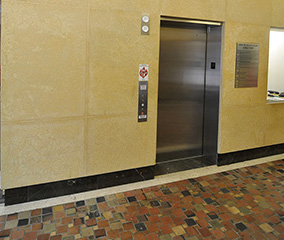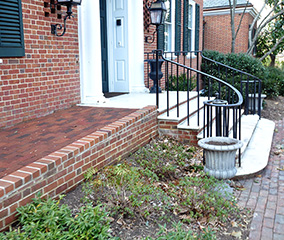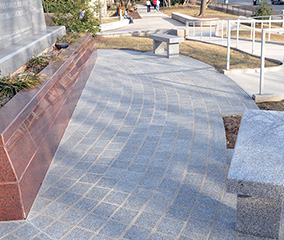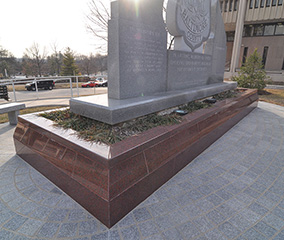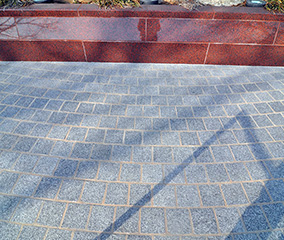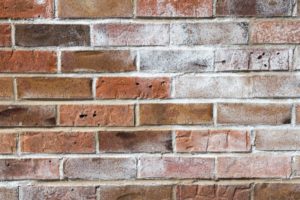
Learn more about what causes brick discoloration, such as efflorescence.
Spotting brick discoloration or stains is not only an eyesore, but these colors can indicate serious problems. If you notice that the bricks in your building are stained, you should take action to restore the damage. The experienced masonry contractors at DelPrete Masonry can assess whether your brick walls need particular types of cleaning and which walls require more immediate attention. By understanding the common causes of brick discoloration and what each color indicates, you can more easily determine which repairs are needed.
White Stains
White stains typically indicate efflorescence. It is generally harmless, as it’s a buildup of water-soluble white salt. Not all white stains are efflorescence, however. Sometimes, they are a lime run, which is a stain caused by calcium carbonate deposits. A lime run is caused by water flowing through tiny holes or cracks in the brick, dissolving the calcium carbonate in the mortar, and depositing it on the brick surface. The lime run looks as though it’s dripping down the wall. Lime run indicates a bigger problem with cracks and holes in your brick.
Green Stains
Vanadium salts can cause green or greenish-yellow stains. These salts originate from the raw materials used to make the bricks. As with lime run, the interaction with water in the bricks causes salt deposits to form. Vanadium stains are acidic, which can damage your brick and are very hard to remove.
Brown or Red Stains
If you see brown or red brick discoloration, this is often caused by manganese. Manganese oxide is a standard coloring component in red bricks and can form stains when exposed to acid. These stains are common, as acid is frequently used in brick manufacturing. Exposure to water can then dissolve the acid, which interacts with the manganese to create discoloration. Rust and corrosion can also cause red and brown stains. If rust is the culprit, that can indicate structural problems with the wall.
Discoloration on Brick Chimneys
It is very common to see black brick discoloration on a brick fireplace or chimney. This results from the soot and creosote generated in the fireplace. It generally doesn’t harm the brick but can create a fire hazard, so it must be cleaned immediately.
Stains From Organic Compositions
If the brick discoloration is green and is occurring in damp areas, it is likely an algae or moss growing on the brick. Algae can create black stains as well. Algae typically develops on walls underneath roof drainage or in shady, humid areas. Fortunately, algae stains of any color are relatively easy to remove and do not present long-term risks to the structural integrity of your brick walls.
If you spot brick discoloration on your walls, consider what the cause may be. If you are worried about deeper issues with the brick, contact DelPrete Masonry today.
CONTACT DEL PRETE MASONRY TODAY!
Whether you are ready to start your next masonry project or are still hesitant and have questions, Del Prete Masonry is here to help. We have the experience and expertise to get it right the first time. Questions? Want to visit some of our residential or commercial projects? Ready to set up a consultation? Feel free to give us a call at 410-683-0650 or visit us online. We are happy to serve Baltimore City and County, Harford County, Carroll County, Anne Arundel County, and Howard County. To see examples of our work and to keep up with our new and exciting projects, be sure to follow us on Facebook, Twitter, and Pinterest.
Tags: algae, brick, brick discoloration, efflorescence












